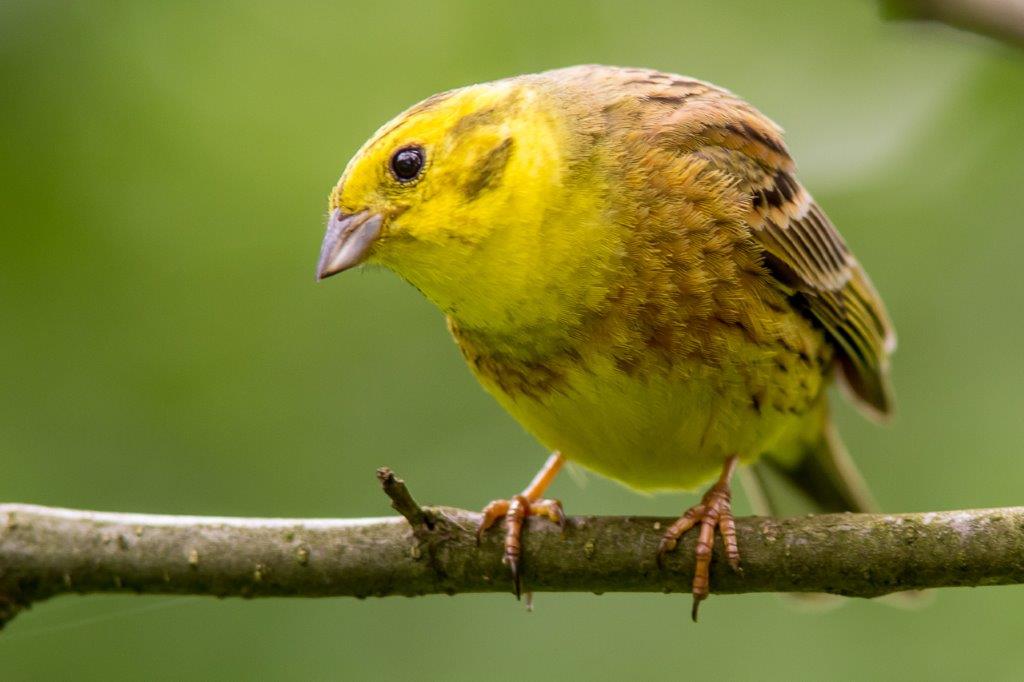By Adam Petrusek & Tereza Petrusková
Linked paper: Extraordinary variation in a simple song: No geographical patterns in initial phrase variation of the Yellowhammer, a passerine with pronounced dialects by S.J. van Boheemen, L. Diblíková, J. Bílková, A. Petrusek, and T. Petrusková, The Auk: Ornithological Advances.
Dialects, a well-known feature of human languages, can also be found in the vocalizations of various bird species. Dialects in bird song are usually defined by a few prominent characteristics that abruptly change from one dialect region to another but remain stable within such regions. But what happens with very variable parts of the song when one crosses the dialect border? We asked this question when studying geographic variation in Yellowhammer song — and got an unexpected answer.
The Yellowhammer (Emberiza citrinella) is a sedentary bird whose dialects have been noticed in Europe for decades. In the last few years, we have revived attention on this phenomenon thanks to citizen science projects that involved the general public in mapping dialect distribution in various countries, including the UK, New Zealand, and Czechia. In fact, the initial success of the project “Dialects of Czech Yellowhammers” (DCY), which managed to cover the whole country, paved the way for other similar projects elsewhere.
Yellowhammer song is simple and easy to recognize. It is often transcribed as “A little bit of bread and no cheese,” though songs in many common dialects instead sound like “A little bit of bread and cheese, please.” The melody in the terminal part of the Yellowhammer song — with or without cheese — distinguishes the different dialects. The beginning of the song, in contrast, is highly variable among males; most of them alternate two or more different variants of the initial phrase. In our research, we focused on the variation of this part of the song, which has usually remained in the shadow of the prominent dialect part.
Mechanisms determining where and how the dialects of the Yellowhammer change are not known. However, banding data indicate that these birds only rarely disperse over large distances, usually staying close to the place where they hatched. We therefore presumed that young males learning the dialect also use “local inspiration” when developing their repertoire of initial phrases. If that is the case, males living close to each other should be more likely to sing similar, or even the same, phrases. To test this, we analyzed song recordings from across Czechia provided by numerous volunteers involved in the DCY project as well as recordings focusing in detail on borders between selected dialect regions.
We have observed an enormous variation of initial phrases in the repertoires of 237 males analyzed — almost every new recording yielded a phrase not observed before. The resulting pattern, however, was always the same. Neither males singing close to each nor those singing the same dialect had more similar initial phrases than those from far apart. Sharing of the same phrase between different individuals, which is not uncommon (45% males shared some phrase with another one), was also unpredictable. We observed it between close neighbors as well as between males hundreds of kilometers away. Apparently, copying and improvisation both play important roles in forming the individual repertoires of Yellowhammer males.
Our detailed analysis of the variation in their song, however, confirmed an important feature that may facilitate further research of the species. The combination of initial phrases in the repertoire of each male seems unique and is stable in time both within and across seasons. A sufficiently long recording of a male’s song may thus provide a reliable clue about its identity. This can be used for individual acoustic monitoring — a non-invasive method that allows tracking of singing males without the need to capture, mark, and re-sight them. Acoustic monitoring may allow researchers to follow territorial dynamics, eavesdrop on male-male interactions, or study other aspects of species’ biology and behavior in the field. Although this method is not widespread, we have had a very good experience with this approach. It may provide insights that are not possible when using more traditional methods of bird monitoring, especially as equipment for passive digital recording of wildlife sounds becomes more and more accessible.
